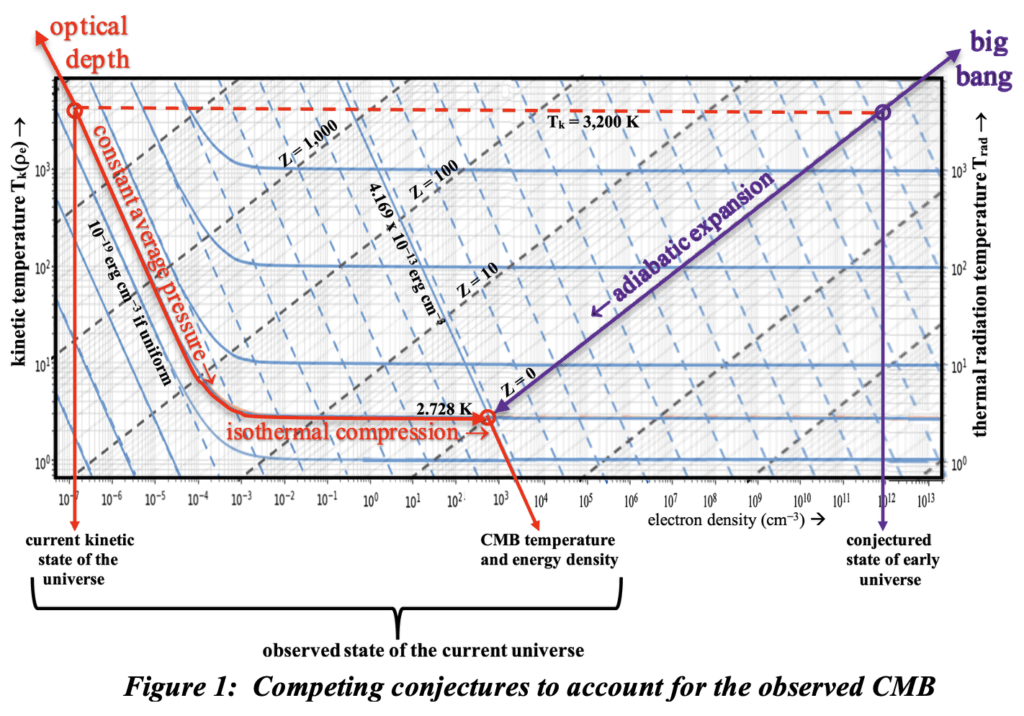The following is just the absrtract of the article posted to this site here.
The observed temperature of the cosmic microwave background (CMB) radiation is commonly interpreted as a relic emitted from an early phase of the universe, redshifted now by cosmic expansion. This paper offers an alternative, thermodynamically grounded explanation that requires neither an expanding spacetime nor a surface of last scattering. It is a stationary-state model of the universe as it is, composed primarily of hydrogenous plasma and organized into gravitationally bound galaxy cluster cells. We demonstrate how redshift, the optical depth of the intergalactic medium, and the lack of uniformity in the hydrostatic clustering of intergalactic plasma all interact to yield the observed CMB temperature of 2.728 K and 4.169e-13 erg per cm^3 energy density—this instead of what would otherwise be the much lower average kinetic energy density of 2e-19 erg per cm^3 of a uniform plasma gas density and temperature. The model provides a consistent explanation for the disparity between expected kinetic and observed radiant energy densities and offers a reinterpretation of the Hubble constant as an essential property of radiative propagation.

Leave a Reply